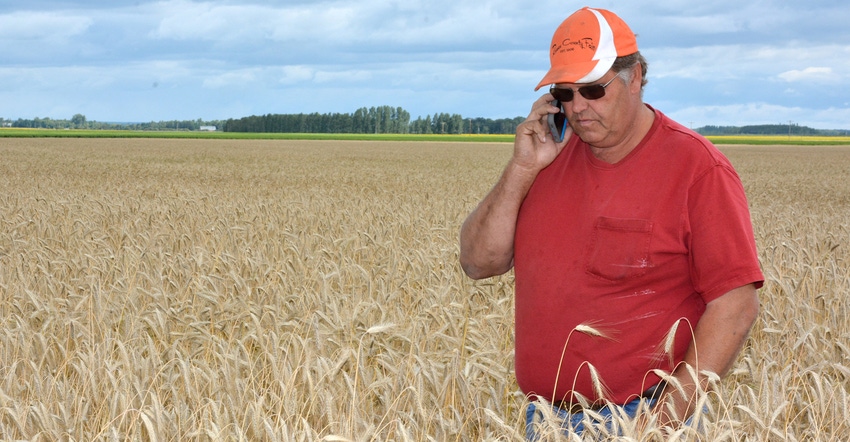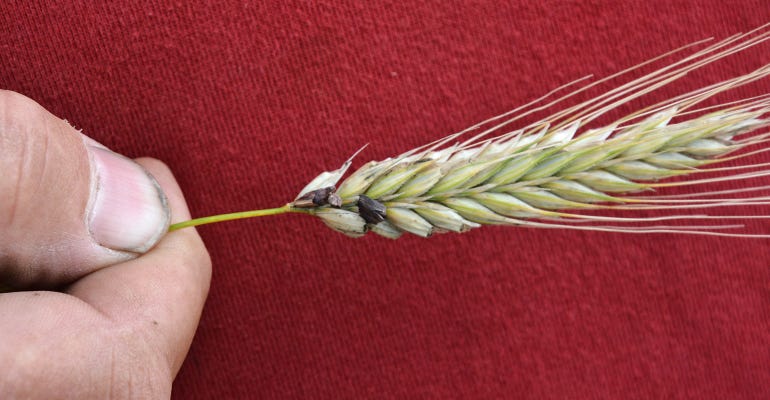
When farmers talk about seeding rye, often it’s about planting cover crop rye that overwinters and then gets terminated the following spring.
Not Richard Magnusson. The Roseau farmer is in his third year of raising German varieties of hybrid rye. He became interested in the crop after seeing good yields from University of Minnesota trials. He started with 60 acres in 2017 and is up to 700 acres growing this season. Other farmers in the Lake of the Woods and Roseau counties are growing it, too, with roughly 3,000 acres planted.
Some farmers find they like adding a higher-yielding hybrid rye variety to the rotation because it has an allelopathic effect on certain weeds and suppresses them. It also traps nutrients in the soil, improving performance of other crops.
Newer varieties of hybrid rye shed a lot of pollen within a short period of time, which helps reduce ergot infection. After rye flowers are pollinated, they immediately close and are no longer susceptible to ergot spores.

BETTER YIELDS: Hybrid rye seeds are bigger and plumper, and the crop yields higher, too, Richard Magnusson says.

Growing rye also helps prevent erosion and nutrient leaching, and it spreads the agronomic workload throughout the year.
Magnusson’s challenges thus far have been with getting the seed delivered in a timely manner in the fall and, of course, the weather. Last fall, he was able to seed on time on Sept. 15. Each fall, he has no-tilled two German varieties from KWS — Bono and Brasetto. He grows them on high-productive ground, adding phosphorus and potassium with seeding in the fall and applying nitrogen as early as possible in the spring. He seeds at a rate of 750,000 to 800,000 seeds per acre.
The hybrid varieties are shorter than non-hybrids, which can get 5 to 6 feet tall. Depending on the growing season, yields have ranged from 70 to 100-plus bushels per acre.
This year’s hybrid rye looked good in mid-May, Magnusson says.
“It had a lot of snow cover over the winter,” he adds.
Magnusson sells his hybrid rye grain for commercial use either in milling or distilling.
In multisite U-M trials from 2016-2018, the two hybrid rye varieties yielded about 50% more compared to the best performing open pollinated varieties. The state average yield for Bono was 160 bushels per acre and for Brasetto, 148 bushels. Open pollinated varieties Rymin and Hazlet yielded 105 and 116 bushels, respectively.
About the Author(s)
You May Also Like






